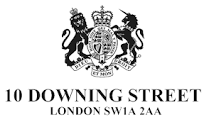PRESS RELEASE : Reading at an early age the key to success
The press release issued by the Department for Education on 22 November 2010.
All children will be given a phonics-based progress check in year 1 so teachers can identify those not at the expected level in reading and in need of extra support, Education Secretary Michael Gove announced today.
Mr Gove said too many primary school children were failing to reach the expected standard and that the short, light-touch test would be designed to assess how well year 1 pupils could read simple, decodable words. He added that the screening check would be based on systematic synthetic phonics as it was internationally proven to drive up basic reading skills from a young age.
Mr Gove said it would be administered by pupils’ teachers and would be designed to
- confirm whether individual pupils had grasped the basics of phonic decoding by the end of year 1
- identify those pupils who needed extra help, so the school can provide support.
Today the government is launching a public consultation to ask teachers, parents, professionals and the public to submit views on how the check might work. It will be piloted in summer 2011 and will take place nationally from summer 2012. To help schools select an effective synthetic phonics programme, the government has published the core criteria that define the key features of such programmes.
Michael Gove said:
A solid foundation in reading is crucial to a child’s success as they progress through primary school, into secondary school and then in later life.
But, in spite of the hard work of teachers and pupils, too many children are currently not reaching the expected reading levels at age 7 and age 11.
We are determined to raise literacy standards in our schools, especially of those not achieving the expected level – a light-touch phonics-based check will provide reassurance that children in year 1 have learned this important skill, will enable us to pinpoint those who are struggling at an early age and will give them the help they need before it is too late.
It will be impossible to drill for and will be a true gauge of a child’s reading skills.
Parents want to know how their children are reading and this will tell them.
On phonics, Schools Minister Nick Gibb, speaking on a visit to Elmhurst Primary School in Newham, London, said:
There is more to reading than phonics – but there is also a weight of evidence that systematic synthetic phonics, taught in the first years of a child’s education, gives children key building blocks they need to understand words, underpins children’s attainment of a good standard of reading and can inspire a lifetime love of reading.
The government is determined to raise the standard of reading in the first years of primary school so that children can master the basic decoding skills of reading early and then spend the rest of primary school reading to learn.
The fact is that alternative methods have left too many young people with poor literacy levels, especially among children of more disadvantaged families, and we are determined that every child can read to their full potential.
Provisional figures released earlier this year showed that in 2010:
- 15% of 7-year-olds failed to reach the expected level (level 2) in reading at key stage 1
- 19% of 11-year-olds did not achieve the expected level (level 4) in reading at key stage 2.
England has also slipped down the international table for reading in primary schools. The Progress in International Reading Literacy Study (PIRLS) of 10-year-olds saw England fall from third out of 35 countries in 2001 to 15th out of 40 countries in 2006.
Shahed Ahmed, the Headteacher of Elmhurst Primary – one of the schools where the check will be pre-trialled, said:
At Elmhurst Primary School we firmly believe that the best way to teach how to read in the early stages is through a rigorous, systematic, engaging phonics approach. I believe that all schools would benefit from taking this approach. It’s important that schools know for young children how good their phonics knowledge is.
An end-of-year-1 phonics check would encourage all schools to teach early reading properly through phonics, and they would then know then the strengths and weaknesses of their pupils.
Ruth Miskin, a leading authority on teaching children to read, said:
Despite numerous well-meaning initiatives over recent years, we still have 20% of children who are unable to access a secondary school curriculum. However, there are many determined heads who ensure that every child learns to read by 6- or 7-years-old. There is no reason why this success cannot be replicated across the whole country.
This reading check will help all headteachers focus their efforts upon the children who are most likely to slip through the net. If we catch these children early, they will have an equal opportunity to make the most of their education and lives.
Ofsted will inspect the teaching of reading and phonics in schools and the impact on pupils’ results, and on 14 November 2010 it published a report showing best practice in the teaching of phonics. The information provided from this test will allow Ofsted and schools to have a better conversation about each school’s teaching of phonics.
The government has also revised the core criteria that define the key features of an effective systematic synthetic phonics programme, to help schools in selecting a suitable programme. Publishers of products have been invited to submit new self-assessment forms for their products, assessing them against the new criteria.
Jan Tyson, headteacher at Turnfurlong Infants School in Aylesbury, Buckinghamshire, said:
Systematic synthetic phonics is key to teaching children reading and writing. It provides them with strategies to decode words, which is especially important because English is such a difficult language to learn with the many different ways to make the same sounds from different letters or combinations of letters.
How phonics works
Phonics focuses on sounds rather than, for example, having children try to recognise whole words.
In analytic phonics, words are broken down into their beginning and end parts, such as ‘str-‘ and ‘eet’, with an emphasis on ‘seeing’ the words and analogy with other words.
In synthetic phonics, children start by sequencing the individual sounds in words – for example, ‘s-t-r-ee-t’, with an emphasis on blending them together.
Once they have learned all these, they progress to reading books.
The ‘synthetic’ part comes from the word ‘synthesise’, meaning to assemble or blend together.
Children who learn using synthetic phonics are able to have a go at new words working from sound alone, whereas those using analytic phonics are more dependent on having prior knowledge of families of words.



